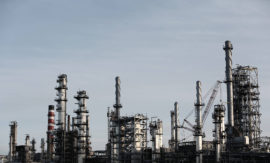| ASCM22 | Pittman, P. et al., ASCM Dictionary, 17th Ed., APICS/ASCM, Chicago, 2022 |
| Hofm92 | Hofmann, M., “PPS — nichts für die chemische Industrie?” in Management Zeitschrift Bd. 61, No. 1, Zurich, 1992 |
| Hofm95 | Hofmann, M., “Konzeption eines Prozessinformations- und Managementsystems,” Gabler Edition, Wissenschaft, Wiesbaden, 1995 |
| Hübe96 | Hübel, S., “Unterstützung zeitkritischer Dokumentationsprozesse in der Pharmaindustrie,” BWI-Reihe Forschungsberichte für die Unternehmenspraxis, vdf Hochschulverlag, Zurich, 1996 |
| HüTr98 | Hübel, S., Treichler, J., “Organizational Concepts for Production Planning and Resource Allocation in a Multi-national Pharmaceutical Enterprise,” in Brandt, D., Cernetic, J., Eds., “Automated Systems Based on Human Skills,” IFAC/Pergamon Press, Oxford, 1998 |
| Kask95 | McKaskill, T., “Process Planning — In Search of a Standard,” Proceedings of the APICS World Symposium, Auckland, Australasian Production and Inventory Control Society, 1995 |
| Loos95 | Loos, P., “Information Management for Integrated Systems in Process Industries,” in Brand, D., Martin, T., Eds., “Automated Systems Based on Human Skills,” IFAC/Pergamon Press, Oxford, 1995 |
| Namu14 | NAMUR-Recommendation, Standardization Committee for Measuring and Control Engineering in the Chemical Industry, 2014 |
| Sche95b | Scherer, E., “Approaches to Complexity and Uncertainty of Scheduling in Process Industries,” in Brand, D., Martin, T., Eds., “Automated Systems Based on Human Skills,” IFAC/Pergamon Press, Oxford, 1995 |
| TaBo00 | Taylor, S.G., Bolander, St.F., “Process Flow Scheduling Principles,” APICS — The Association for Operations Management, Chicago, IL, 2000 |
Course 8: Sections and their intended learning outcomes

Course 8 – The Concept for the Process Industry
Intended learning outcomes: Produce characteristics of the process industry. Disclose processor-oriented master and order data management. Explain in detail processor-oriented resource management. Describe special features of long-term planning.

8.2 Processor-Oriented Master and Order Data Management
Intended learning outcomes: Produce an overview on processes, technology, and resources. Present the process train: a processor-oriented production structure. Disclose lot control in inventory management.

8.3 Processor-Oriented Resource Management
Intended learning outcomes: Explain campaign planning. Differentiate between processor-dominated Scheduling and material-dominated scheduling. Describe a nonlinear usage quantity and a product structure with loops.

8.4 Special Features of Long-Term Planning
Intended learning outcomes: Disclose the determination of the degree of detail of the master production schedule. Describe pipeline planning across several independent locations.

8.5 Summary
.

8.6 Keywords
.

8.7 Scenarios and Exercises
Intended learning outcomes: Differentiate between batch production and continuous production. Calculate an example of manufacture of by-products. Elaborate an example of production planning in process industries.

8.8 References
.
![Case [Course 8]](https://opess.ethz.ch/wp-content/uploads/2017/02/08-270x163.jpg)
Case [Course 8]
.

8.1 Characteristics of the Process Industry
Intended learning outcomes: Explain divergent product structures and by-products. Describe high-volume line production, flow resources and inflexible facilities. Produce an overview on large batches, lot traceability, and loops in the order structure.
